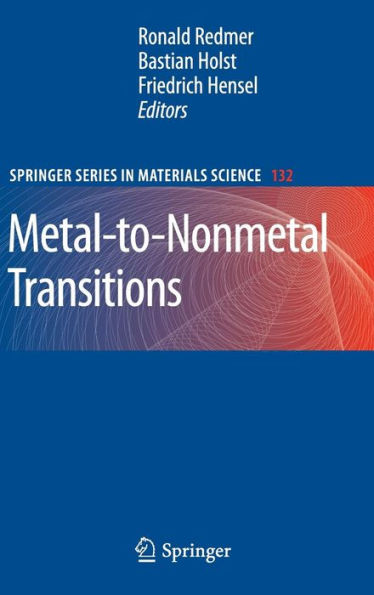Table of Contents
Preface V
References IX
1 Luttinger, Peierls or Mott? Quantum Phase Transitions in Strongly Correlated 1D Electron-Phonon Systems Holger Fehske Georg Hager 1
1.1 Introduction 1
1.2 Luttinger-Peierls Metal-Insulator Transition 3
1.3 Peierls-Mott Insulator-Insulator Transition 9
1.4 On the Possibility of an Intervening Metallic Phase 14
1.5 Limiting Cases 16
1.5.1 Adiabatic Holstein-Hubbard Model 16
1.5.2 Spin-Peierls Model 17
1.6 Conclusions 18
References 20
2 The Metal-Nonmetal Transition in Fluid Mercury: Landau-Zeldovich Revisited Friedrich Hensel 23
2.1 Introduction 23
2.2 The Liquid-Vapor Phase Boundary of Mercury 24
References 34
3 The Influence of Pauli Blocking Effects on the Mott Transition in Dense Hydrogen W. Ebeling D. Blaschke R. Redmer H. Reinholz G. Röpke 37
3.1 Introduction 37
3.2 Bound States in a Plasma 39
3.2.1 Generalized Beth-Uhlenbeck Equation 39
3.2.2 Effective Schrödinger Equation of Pairs 40
3.2.3 Evaluation of the Mean-Field Energy Shift of Bound States: Perturbation Theory 42
3.2.4 Evaluation of the Mean-Field Energy Shift of Bound States: Variational Approach 45
3.2.5 Evaluation of the Mean-Field Energy Shift of Bound States Including the Fock Term 48
3.2.6 Discussion of Further Contributions to the Shift 50
3.3 Thermodynamic Functions and Ionization Equilibrium of Hydrogen 51
3.3.1 The Chemical Picture 51
3.3.2 The Ionization Equilibrium 54
3.4 Discussion and Conclusions 58
References 59
4 Metal-Insulator Transition in Dense Hydrogen Ronald Redmer Bastian Holst 63
4.1 Introduction 63
4.2 Mott Effect in Dense Plasmas 64
4.2.1 Theoretical Concept 64
4.2.2 Experimental Signatures 66
4.3 Advanced Chemical Models 67
4.3.1 Free Energy Model for the EOS of Dense Hydrogen 67
4.3.2 Reduced Volume Concept 68
4.3.3 Results for the EOS 69
4.4 Warm Dense Hydrogen in the Physical Picture 71
4.4.1 Quantum Molecular Dynamics Simulations 71
4.4.2 Ab Initio EOS Data and Hugoniot Curve 73
4.4.3 Dynamic Conductivity 77
4.5 Conclusion 79
References 80
5 Resolving the Ion and Electron Dynamics in Finite Systems Exposed to Intense Optical Laser Fields J. Tiggesbäumker T. Fennel N.X. Truong K.-H. Meiwes-Broer 85
5.1 Introduction 85
5.2 Experimental Challenge 91
5.3 Computational Details 95
5.4 Results and Discussion 100
5.4.1 Energetic Particle Emission 100
5.4.2 Time-Resolved Studies 103
5.4.3 Directed Electron Emission 107
5.4.4 Control Experiments 109
5.5 Conclusions 111
References 111
6 Mott Effect in Nuclear Matter Gerd Röpke 115
6.1 Introduction 115
6.2 Single Particle Spectral Function and Self-Energy 117
6.3 Two-Particle Contribution: Generalized Beth-Uhlenbeck Formula and Virial Expansion 120
6.4 Cluster Mean-Field Approximation 124
6.5 Nucleon-Nucleon Interaction 127
6.6 Quasiparticle Approximation and the EoS at High Densities 130
6.7 Medium Modifications of Two-Particle Correlations 132
6.8 Medium Modification of Cluster Properties 136
6.9 Composition of Normal Nuclear Matter 139
6.10 Comparison with the Concept of Excluded Volume 143
6.11 Two-Particle Condensates at Low Temperatures 143
6.12 Four-Particle Condensates and Quartetting in Nuclear Matter 146
6.13 Suppression of Condensate Fraction in α Matter at Zero Temperature 150
6.14 Enhancement of Cluster c.o.m. S Orbital Occupation in 4n Nuclei 153
6.15 Conclusions 156
References 159
7 BEC-BCS Crossover in Strongly Interacting Matter Daniel Zablocki David Blaschke Gerd Röpke 161
7.1 Introduction 161
7.2 Quark Matter 163
7.2.1 Partition Function and Model Lagrangian 163
7.2.2 Hubbard-Stratonovich Transformation: Bosonization 164
7.2.3 Mean-Field Approximation: Order Parameters 165
7.2.4 Phase Diagram 166
7.2.5 Gaussian Fluctuations: Bound and Scattering States 169
7.3 Further Developments 175
7.4 Nuclear Matter 176
7.4.1 Lagrangian Approach to the Partition Function (NJL vs. Walecka model) 176
7.4.2 Hubbard-Stratonovich Transformation: Bosonization 177
7.4.3 Mean-Field Approximation: Order Parameters and EoS 178
7.4.4 Discussion 180
7.5 Conclusions 181
References 181
Index 183




